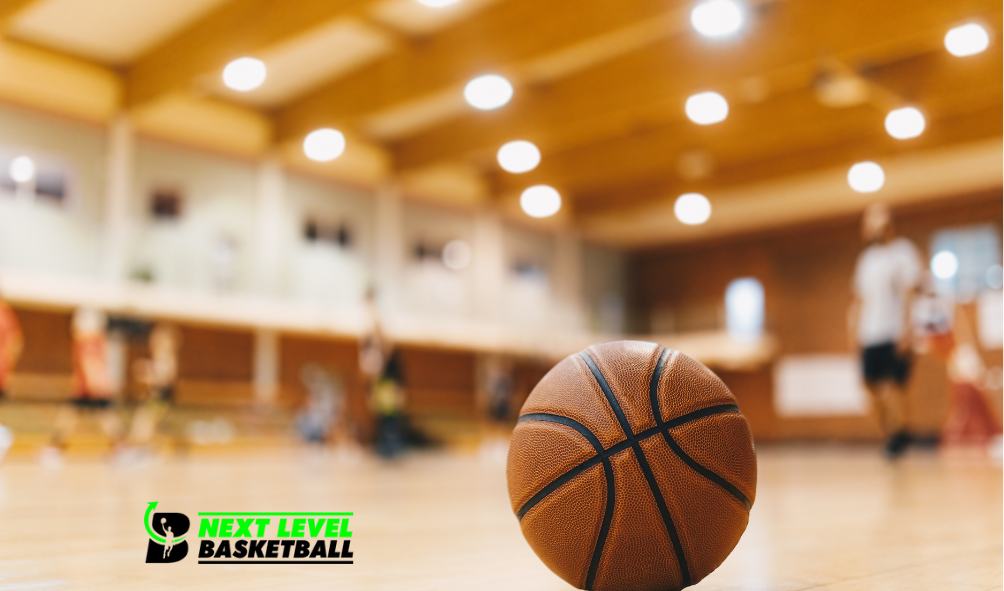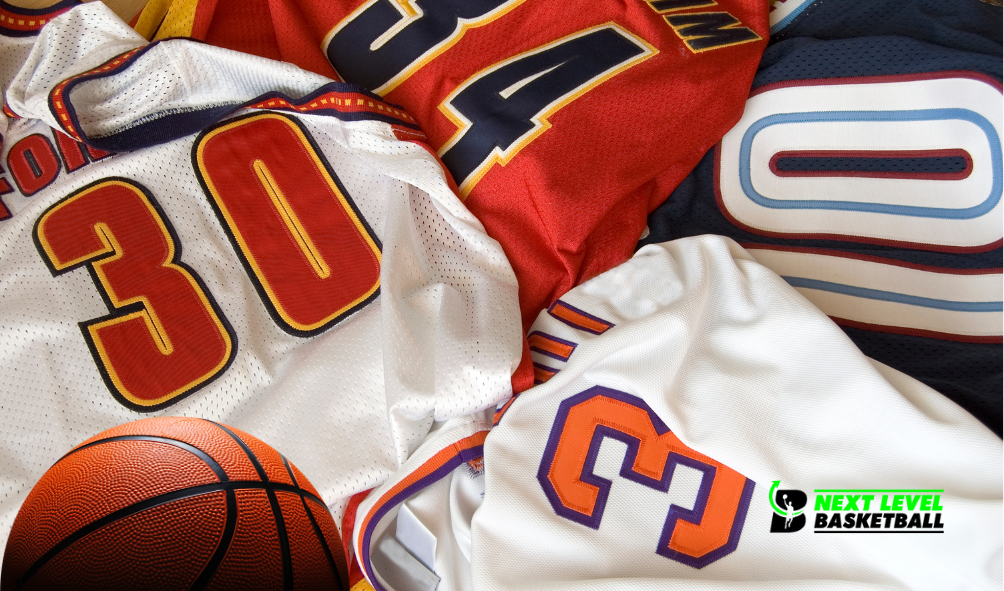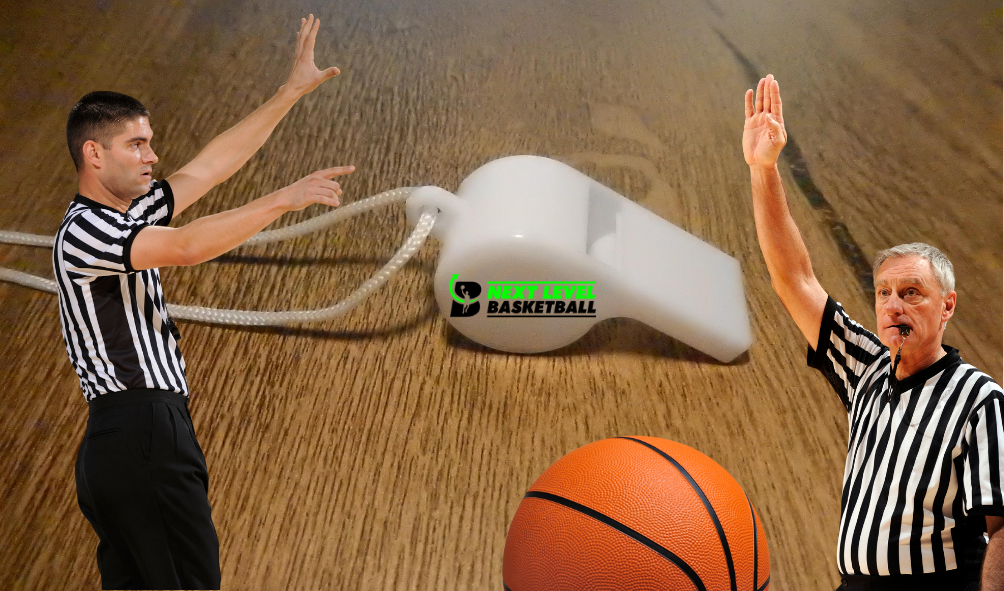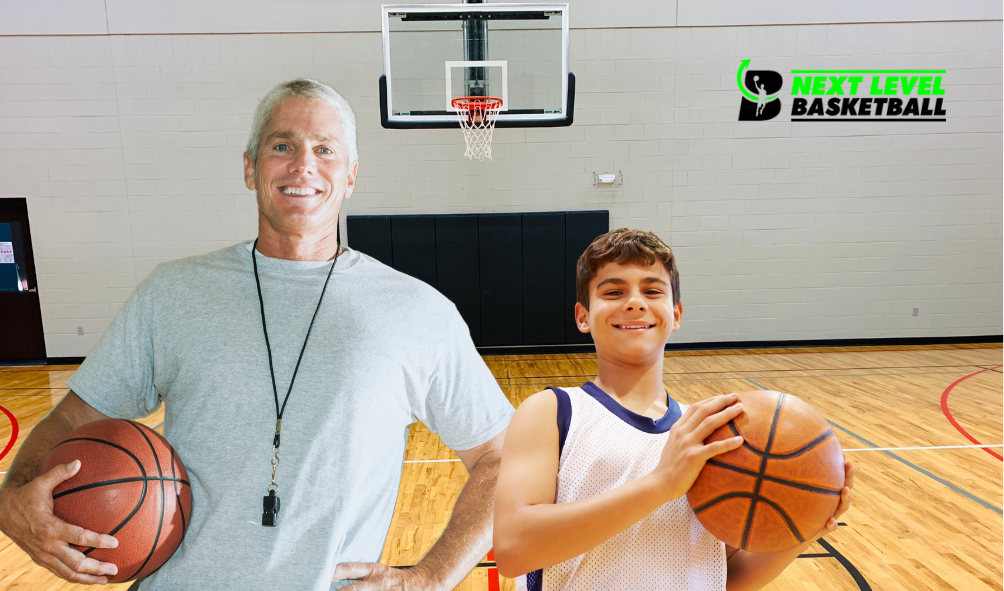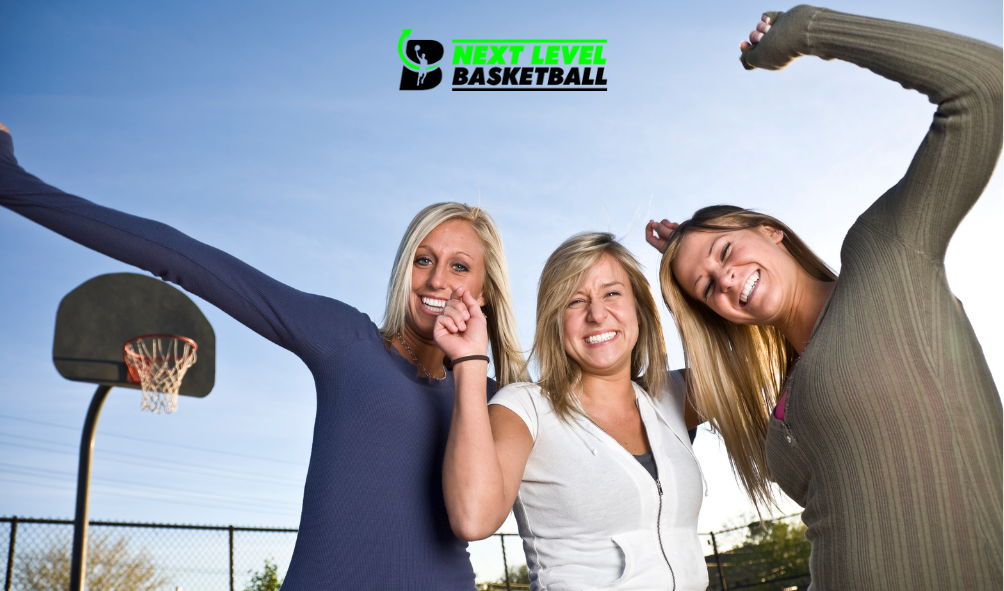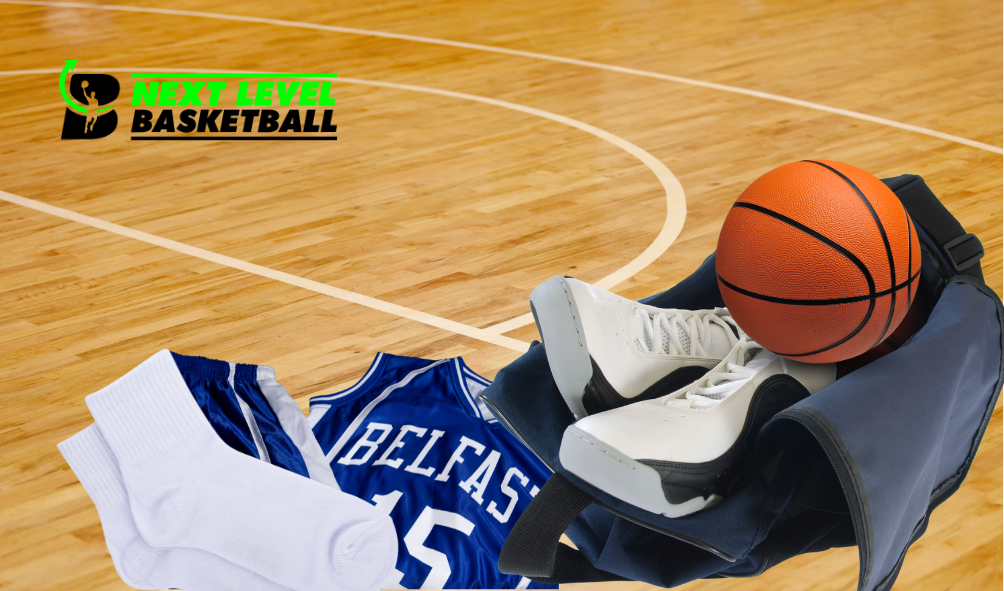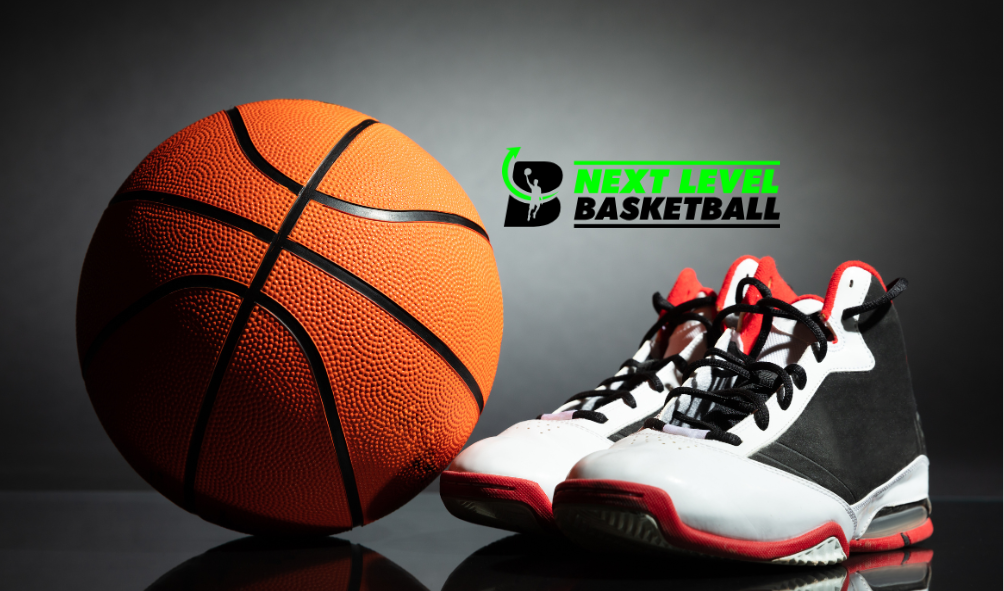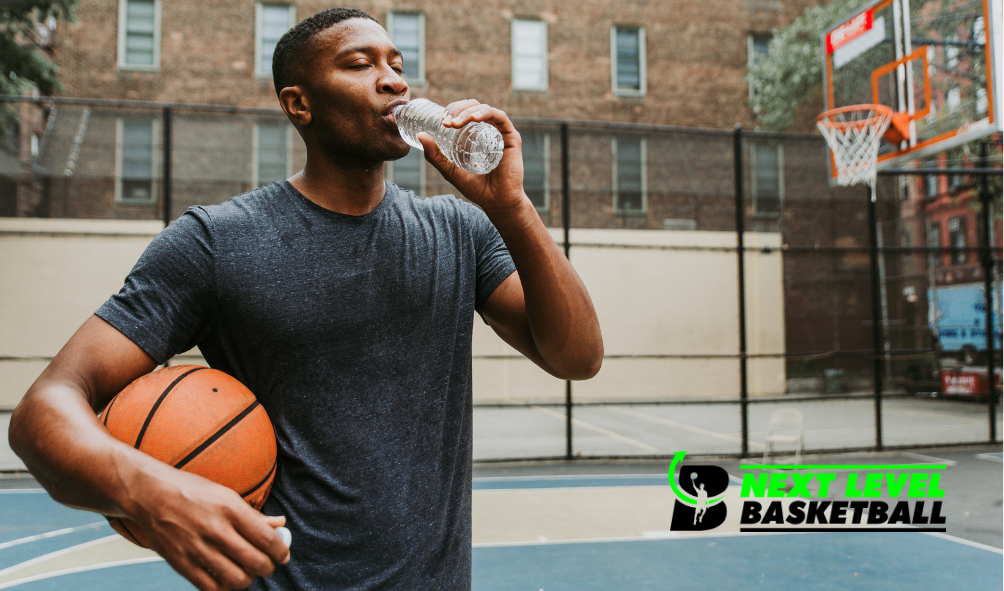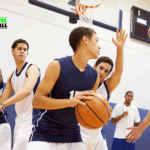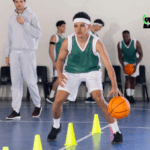Are you passionate about basketball but worry about the risk of injuries that come with playing the game? If so, you’re not alone. Basketball is an intense and physically demanding sport, and injuries can happen to anyone, from beginners to professional players. However, there are proven strategies that can help prevent basketball injuries and keep you in the game.
In this article, we will explore effective techniques and tips for basketball injury prevention. From warm-up exercises and stretching routines to proper footwear and nutrition advice, we’ll cover it all. We’ll also delve into the importance of rest and recovery, as well as the role of strength and conditioning in injury prevention.
Whether you’re a parent concerned about your child’s safety on the court or a dedicated athlete looking to stay injury-free, this article is for you. By implementing these strategies, you can reduce the risk of common basketball injuries and stay in the game for years to come. So, lace up your sneakers, and let’s dive into the world of basketball injury prevention!
The importance of injury prevention in basketball
Basketball is a thrilling and fast-paced sport that captivates players and fans alike. However, the dynamic nature of the game, combined with the physical demands it places on the body, also makes it susceptible to a wide range of injuries. From sprains and strains to more serious conditions like ACL tears and concussions, the risk of injury is ever-present for basketball players of all levels.
Preventing these injuries is crucial not only for the well-being of the players but also for the overall enjoyment and longevity of their basketball careers. Injuries can sideline players for weeks or even months, disrupting their training, performance, and team dynamics. Moreover, repeated injuries can lead to long-term complications and even premature retirement from the sport.
Implementing effective injury prevention strategies is, therefore, a crucial aspect of basketball training and preparation. By taking proactive measures to protect the body and address potential risk factors, players can reduce the likelihood of sustaining injuries and maintain their competitive edge on the court. This not only benefits the individual player but also contributes to the overall success and sustainability of the team as a whole.
Common basketball injuries and their causes
Basketball is a sport that involves a wide range of dynamic movements, including sudden starts, stops, jumps, and rapid changes of direction. These high-intensity actions, combined with the physical contact inherent in the game, can lead to a variety of common basketball injuries.
- One of the most prevalent injuries in basketball is ankle sprains. The quick lateral movements and frequent jump landings in the sport put significant stress on the ankle joint, making it vulnerable to sprains and strains. These injuries can range from mild to severe, and they can sideline players for weeks or even months, depending on the severity.
- Another common injury in basketball is knee injuries, particularly to the ACL (Anterior Cruciate Ligament). The sudden stops, pivots, and landing from jumps can place immense strain on the knee joint, leading to ACL tears or other ligament and tendon damage. These injuries can be devastating, often requiring surgery and extensive rehabilitation.
- Overuse injuries, such as tendinitis and stress fractures, are also common in basketball. The repetitive nature of the sport’s movements, combined with the high-impact nature of the game, can lead to inflammation and micro-trauma in various parts of the body, including the knees, hips, and feet. These injuries can be challenging to manage and often require a combination of rest, treatment, and a gradual return to play.
- Concussions are another significant concern in basketball, particularly due to the physical nature of the game and the risk of collisions with other players or the floor. Proper protocols for concussion management and return to play are essential to ensure the safety and well-being of basketball players.
Understanding the common basketball injuries and their underlying causes is the first step in developing effective injury prevention strategies. By addressing these risk factors and implementing appropriate measures, players can significantly reduce their chances of sustaining injuries and maintain their performance on the court.
Understanding the biomechanics of basketball movements
To effectively prevent basketball injuries, it is essential to understand the biomechanics of the sport’s key movements. Basketball involves a complex interplay of various muscle groups, joints, and movement patterns, all of which can contribute to the risk of injury if not properly addressed.
- One of the critical aspects of basketball biomechanics is the loading and unloading of the lower body during actions such as jumping, landing, and changing direction. The explosive nature of these movements places significant stress on the muscles, tendons, and joints, particularly in the knees, ankles, and hips. Proper technique and muscle strength are crucial in managing these forces and reducing the risk of injury.
- Another important factor is the rotational and lateral movements inherent in basketball. The sport requires players to constantly change direction, pivot, and shift their weight, often at high speeds. These movements can place strain on the core, hips, and lower back, leading to injuries if the body is not properly aligned and stabilized.
The upper body also plays a crucial role in basketball, with actions such as shooting, passing, and dribbling. Imbalances or weaknesses in the shoulder, elbow, and wrist joints can contribute to overuse injuries and decrease the player’s overall performance and injury resilience.
By understanding the specific biomechanical demands of basketball, players and coaches can develop targeted injury prevention strategies. This may include exercises and drills that address the key movement patterns, muscle groups, and joint stability required for the sport. Additionally, understanding the biomechanics can help players identify and correct any movement inefficiencies or imbalances that may increase their risk of injury.
Incorporating biomechanical principles into the training and preparation of basketball players is a crucial step in reducing the incidence of injuries and keeping players on the court, performing at their best.
Warm-up exercises for injury prevention
Proper warm-up is a critical component of injury prevention in basketball. A well-designed warm-up routine can help prepare the body for the physical demands of the sport, reduce the risk of injury, and enhance overall performance.
One of the key elements of a warm-up for basketball players is dynamic stretching. Unlike static stretching, which can be done after a workout, dynamic stretching involves active movements that gradually increase the range of motion and prepare the muscles and joints for the upcoming activity. Examples of dynamic stretches for basketball include leg swings, high knees, and lateral lunges, which target the major muscle groups used in the sport.
Activation exercises are another important component of a basketball warm-up. These exercises focus on engaging and activating the core, hips, and lower body muscles that are crucial for basketball movements. Examples include glute bridges, lateral band walks, and bodyweight squats. By activating these muscle groups, players can improve their stability, balance, and neuromuscular control, which can help prevent injuries during the game.
Incorporating plyometric exercises into the warm-up can also be beneficial for basketball players. Plyometrics, such as jump squats and box jumps, help to develop explosive power and improve the body’s ability to absorb and generate force – essential qualities for success in basketball. However, it’s important to start with low-impact plyometric exercises and gradually progress the intensity to avoid overloading the body.
Additionally, basketball-specific drills and agility exercises should be included in the warm-up routine. These drills mimic the movements and footwork required in the sport, such as lateral shuffles, backpedaling, and change-of-direction drills. By practicing these movements at a lower intensity during the warm-up, players can better prepare their bodies and neural pathways for the game.
Incorporating a comprehensive warm-up routine into the basketball training regimen is a simple yet highly effective way to reduce the risk of injury and enhance overall performance. By taking the time to properly prepare the body, players can stay in the game and minimize the likelihood of sustaining a costly injury.
Strength and conditioning exercises specific to basketball
While warm-up exercises are essential for injury prevention, a well-designed strength and conditioning program is equally crucial for basketball players. Developing the appropriate muscular strength, power, and endurance can significantly reduce the risk of common basketball injuries.
One of the primary focuses of a basketball-specific strength and conditioning program should be on the lower body. Exercises such as squats, deadlifts, and lunges can help build strength and stability in the hips, knees, and ankles – key areas prone to injury in basketball. These exercises should be performed with proper form and progressively increased in intensity to challenge the player’s capabilities.
Plyometric exercises, as mentioned in the warm-up section, are also an important component of a basketball strength and conditioning program. Exercises like box jumps, depth jumps, and hurdle hops can help develop the explosive power and reactive ability required for successful basketball performance. However, it’s crucial to gradually introduce and progress these exercises to avoid overloading the body and risking injury.
Core strengthening is another essential aspect of a basketball-focused strength and conditioning program. A strong and stable core helps to maintain proper body alignment and control during the dynamic movements of the sport, reducing the risk of lower back, hip, and knee injuries. Exercises like planks, ab wheel rollouts, and anti-rotation exercises can help build core strength and stability.
Incorporating upper body strength training is also important for basketball players. While the lower body is the primary driver of movement, the upper body plays a crucial role in shooting, passing, and protecting the ball. Exercises like push-ups, pull-ups, and overhead presses can help develop the necessary upper body strength and endurance.
In addition to traditional strength training exercises, basketball players should also focus on exercises that target the smaller stabilizing muscles and proprioception. Balance exercises, such as single-leg squats and BOSU ball exercises, can help improve overall body control and reduce the risk of ankle and knee injuries.
By incorporating these basketball-specific strength and conditioning exercises into their training regimen, players can build the necessary physical qualities to withstand the demands of the sport and reduce their risk of sustaining injuries.
Proper technique and form for basketball injury prevention
Proper technique and form are essential not only for optimal performance but also for injury prevention in basketball. Many common basketball injuries can be attributed to poor movement patterns and improper execution of fundamental skills.
- One of the critical areas of focus for technique and form in basketball is the shooting motion. Proper shooting mechanics, including hand placement, elbow positioning, and body alignment, can help reduce the risk of upper body injuries, such as shoulder and elbow issues. Coaches and players should emphasize the importance of maintaining good form during shooting drills and game situations.
- Footwork is another crucial aspect of basketball technique that can impact injury prevention. Proper foot placement and weight distribution during movements like cutting, pivoting, and landing can help mitigate the risk of ankle and knee injuries. Players should practice these footwork patterns regularly to ingrain the correct movement habits.
- Correct body positioning and alignment are also essential for injury prevention in basketball. Maintaining a balanced, upright stance with the core engaged can help players maintain control and stability during the sport’s dynamic movements. Coaches should emphasize proper body mechanics and posture during drills and game situations.
- Proper landing technique is particularly important for basketball players, as the repeated impact of jumping and landing can lead to significant stress on the joints. Players should be trained to land softly, with knees bent and weight distributed evenly, to absorb the forces and reduce the risk of injuries like ACL tears.
In addition to individual skill execution, team-level strategies and tactics can also impact injury prevention. For example, proper defensive positioning and communication can help players avoid collisions and minimize the risk of contact-related injuries. Coaches should emphasize the importance of these team-oriented techniques as part of a comprehensive injury prevention program.
By focusing on proper technique and form in all aspects of basketball, players and coaches can significantly reduce the risk of common injuries and keep players on the court, performing at their best.
The role of nutrition in injury prevention for basketball players
Nutrition plays a crucial role in injury prevention for basketball players. A well-balanced and nutrient-rich diet can help support the body’s natural healing and recovery processes, as well as optimize overall physical performance and resilience.
- One of the key aspects of nutrition for injury prevention is adequate protein intake. Protein is essential for the repair and rebuilding of muscle tissue, which is crucial for recovering from injuries and maintaining muscular strength and endurance. Basketball players should aim to consume a sufficient amount of high-quality protein sources, such as lean meats, fish, eggs, and dairy products, to support their training and recovery needs.
- Carbohydrates are also vital for basketball players, as they provide the primary fuel source for the body’s energy demands during training and competition. Ensuring a steady supply of complex carbohydrates, such as whole grains, fruits, and vegetables, can help maintain glycogen stores and prevent fatigue, which can increase the risk of injury.
- Hydration is another critical component of injury prevention in basketball. Proper hydration helps to regulate body temperature, support joint and muscle function, and facilitate the transport of nutrients and oxygen throughout the body. Basketball players should aim to drink plenty of water before, during, and after training and games to maintain optimal hydration levels.
- In addition to macronutrients (protein, carbohydrates, and fats), certain micronutrients can also play a role in injury prevention. For example, vitamins and minerals like calcium, vitamin D, and magnesium are essential for bone health and can help reduce the risk of stress fractures and other bone-related injuries. Antioxidants, such as vitamins C and E, can also support the body’s natural healing and recovery processes.
- Incorporating anti-inflammatory foods into the diet, such as fatty fish, berries, and leafy greens, can also be beneficial for basketball players. These foods contain compounds that can help reduce inflammation and promote faster recovery from injuries.
By prioritizing a well-balanced, nutrient-rich diet, basketball players can support their overall physical health, enhance their recovery and regeneration, and reduce the risk of sustaining injuries that could sideline them from the game.
Recovery and rest for optimal basketball injury prevention
In the pursuit of injury prevention in basketball, the importance of recovery and rest cannot be overstated. While a comprehensive training regimen and proper technique are essential, allowing the body to rest and recover is a critical component of any effective injury prevention strategy.
Adequate sleep is one of the most fundamental aspects of recovery for basketball players. During sleep, the body undergoes essential physiological processes that support muscle repair, tissue regeneration, and hormone regulation – all of which are crucial for injury prevention and optimal performance. Basketball players should aim for 7-9 hours of quality sleep each night to support their recovery and overall health.
Active recovery, such as low-intensity activities like walking, light cycling, or gentle stretching, can also play a valuable role in injury prevention. These activities help to promote blood flow, reduce muscle soreness, and facilitate the removal of metabolic waste products, all of which can contribute to a faster recovery and reduced risk of overuse injuries.
Incorporating scheduled rest days into the training schedule is another essential aspect of recovery and injury prevention. These rest days allow the body to fully recover and repair, reducing the risk of overtraining and the associated increased susceptibility to injuries. Basketball players should aim for at least one or two rest days per week, depending on the intensity and volume of their training.
Soft tissue therapies, such as massage, foam rolling, and myofascial release, can also be beneficial for basketball players in the recovery process. These techniques help to alleviate muscle tension, improve flexibility, and enhance blood flow, all of which can contribute to faster recovery and reduced injury risk.
In addition to physical recovery, mental and emotional rest are also crucial for basketball players. The psychological demands of the sport, combined with the rigors of training and competition, can lead to burnout and increased susceptibility to injuries. Basketball players should prioritize activities that promote mental relaxation and stress management, such as meditation, mindfulness practices, and engaging in hobbies outside of the sport.
By prioritizing recovery and rest as part of their overall injury prevention strategy, basketball players can optimize their physical and mental well-being, enhance their performance, and reduce the likelihood of sustaining costly injuries that could sideline them from the game.
The importance of wearing appropriate protective gear
Protective gear plays a vital role in injury prevention for basketball players. While proper technique, strength training, and recovery are essential, the use of appropriate protective equipment can provide an additional layer of safeguard against common basketball injuries.
- One of the most important pieces of protective gear for basketball players is the basketball shoe. Choosing the right shoes that offer adequate support, cushioning, and traction can help reduce the risk of ankle sprains, foot and heel pain, and other lower-body injuries. Basketball players should look for shoes that are specifically designed for the demands of the sport, with features like high-top support, lateral stability, and shock-absorbing midsoles.
- Knee braces and sleeves can also be beneficial for basketball players, particularly those with a history of knee injuries or those who play in positions that involve a lot of high-impact movements. These protective devices can help provide additional support and stability to the knee joint, reducing the risk of further injury.
- Mouthguards are another essential piece of protective gear for basketball players. Collisions and contact with other players or the court can lead to dental injuries, and a properly fitted mouthguard can help protect the teeth and jaw from these types of injuries.
- For positions that involve more physical contact, such as post players, the use of padded compression shorts or girdles can help protect the hips, tailbone, and other vulnerable areas from impact-related injuries. These protective garments can help absorb shock and reduce the risk of contusions and other soft tissue injuries.
- In some cases, the use of protective headgear, such as padded headbands or helmets, may also be considered for basketball players. While the research on the effectiveness of these devices in preventing concussions is still ongoing, they can provide an additional layer of protection for players who are at a higher risk of head injuries.
By incorporating the appropriate protective gear into their basketball routine, players can enhance their overall injury resilience and focus on performing at their best without the constant worry of sustaining a debilitating injury.
Gear up, hit the court, and let your performance do the talking. Wear the right basketball gear and get the proper training exercises at Next Level Basketball. Call 954-621-8470 to book your first session.
